How snowflakes form and get their different shapes
If you have ever made a snowflake chain, or watched a holiday movie, you might recall a complex snowflake that many would describe as beautiful. This is one of many different shapes that snowflakes can come in. Sometimes they can be very basic to the naked eye, but other times that can seem even more sophisticated. The main factor impacting the final shape of snowflakes is dependent on the temperature it was created in.
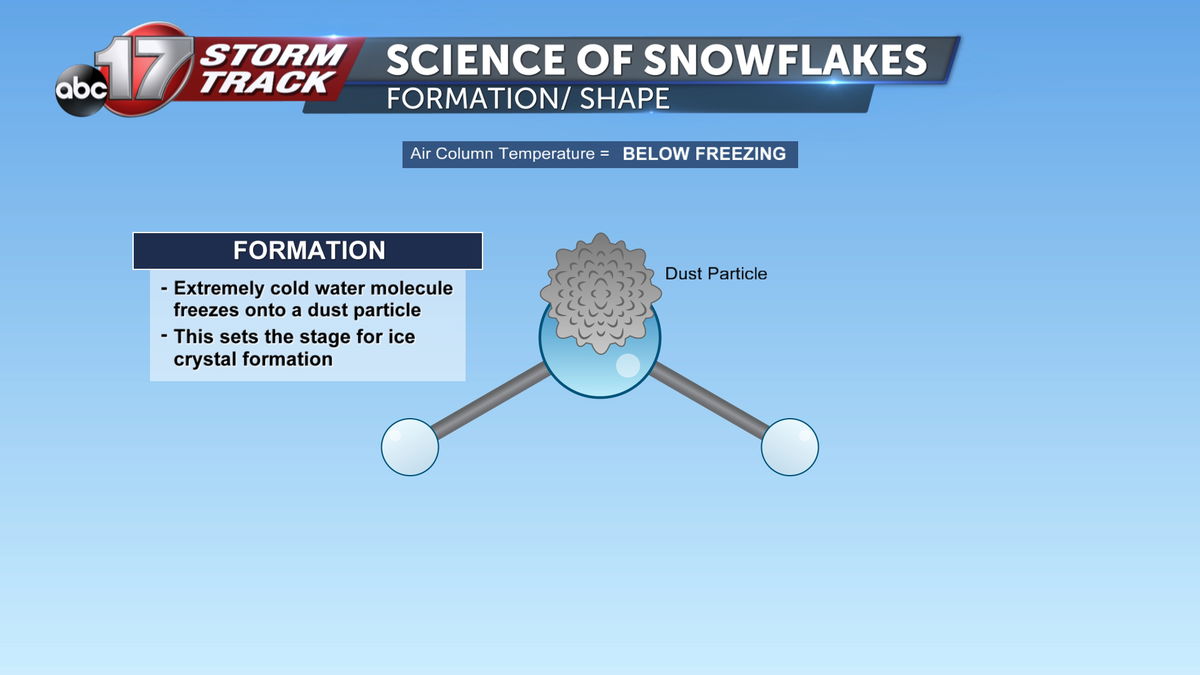
A water molecule consisting of two hydrogen atom and teo oxygen atom first collects and freezes on other air pollutants such as dust.
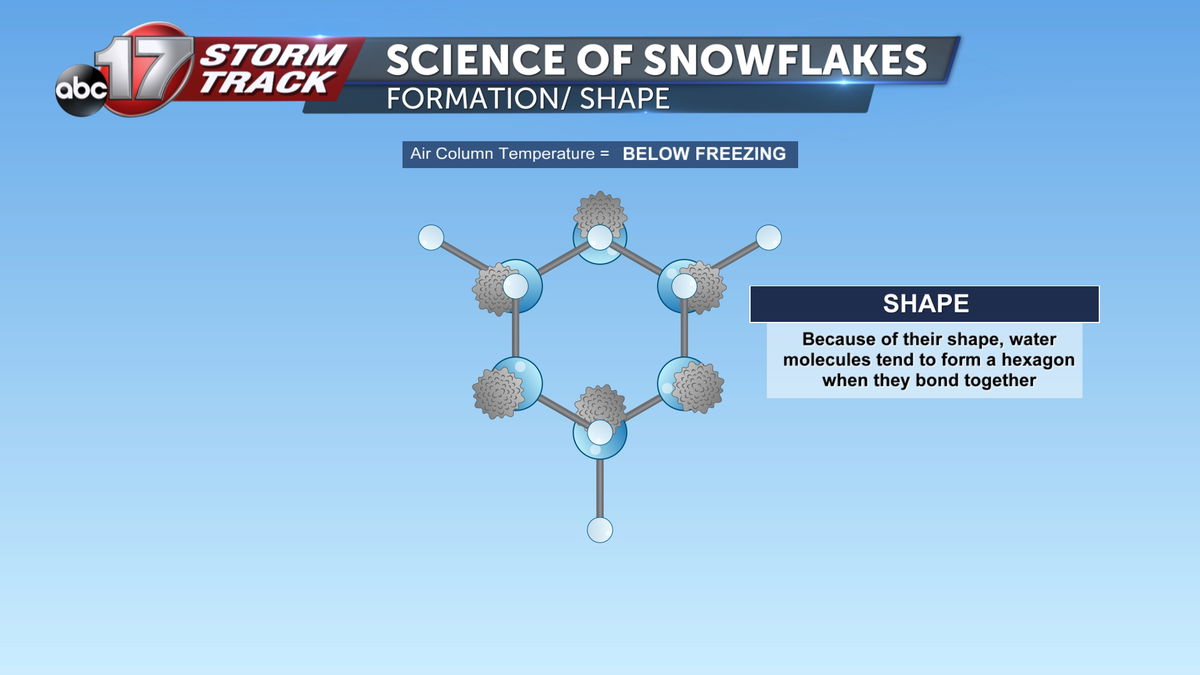
From there, more water molecules collect and freeze together.
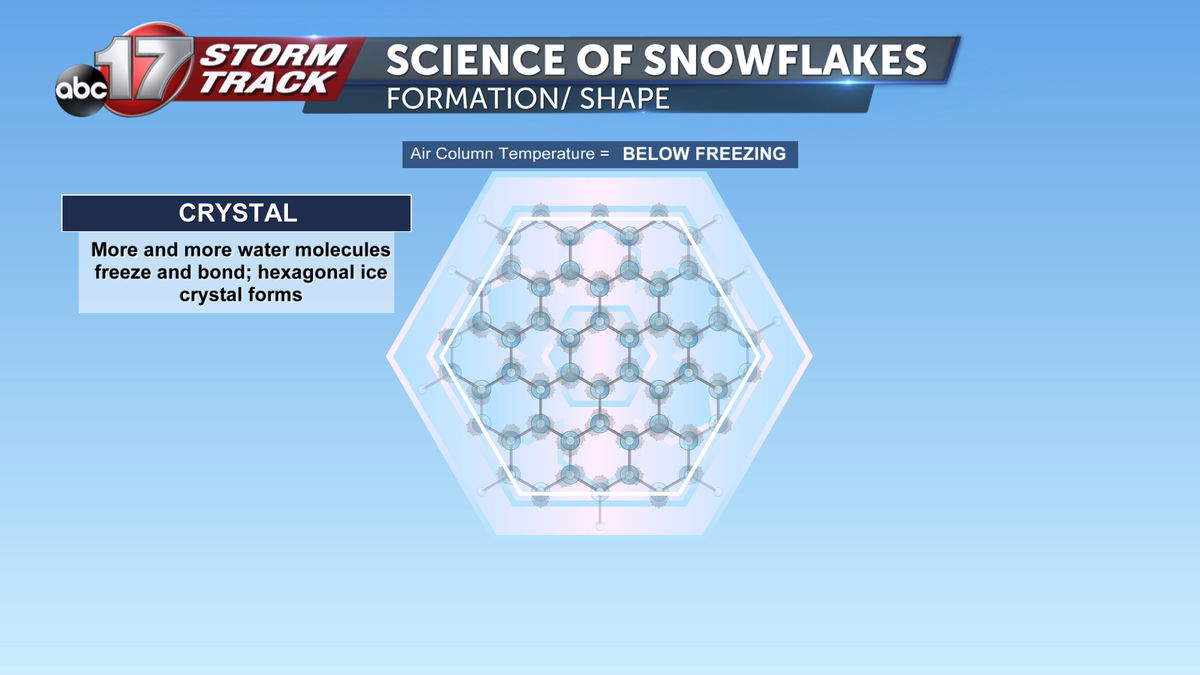
These molecules form an hexagonal ice crystal due to the water molecules shape.
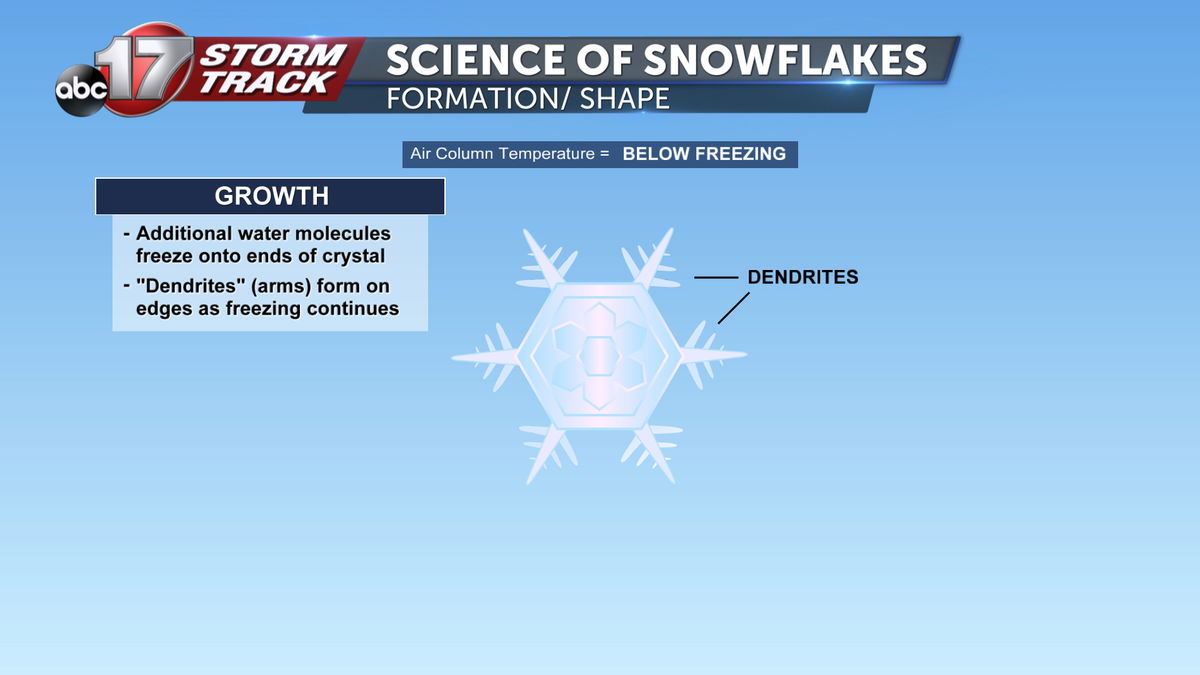
from this original hexagonal ice crystal, arms form extending outward known as dendrites. These are what form the more appealing and complicated flakes seen.

Temperatures play the key factor in the final shape of a snowflake. From freezing to -8 degrees Fahrenheit, the final shape is typically dendrites and needles.

From temperatures below -8 degrees Fahrenheit and on, more basic shape profiles are seen called plate columns.
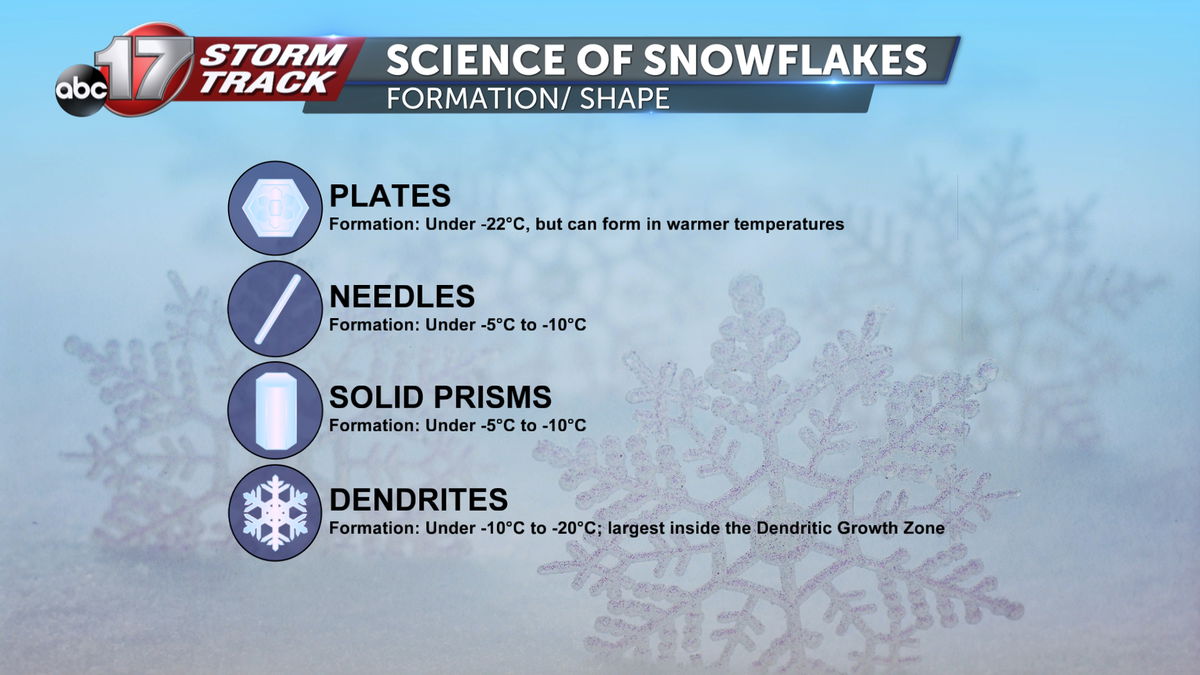
Moisture is an important factor in the atmosphere during these shaping phases, when the environment is more humid, we could see increased flakes and if cool enough, increased snowfall rates causing issues for travel.
